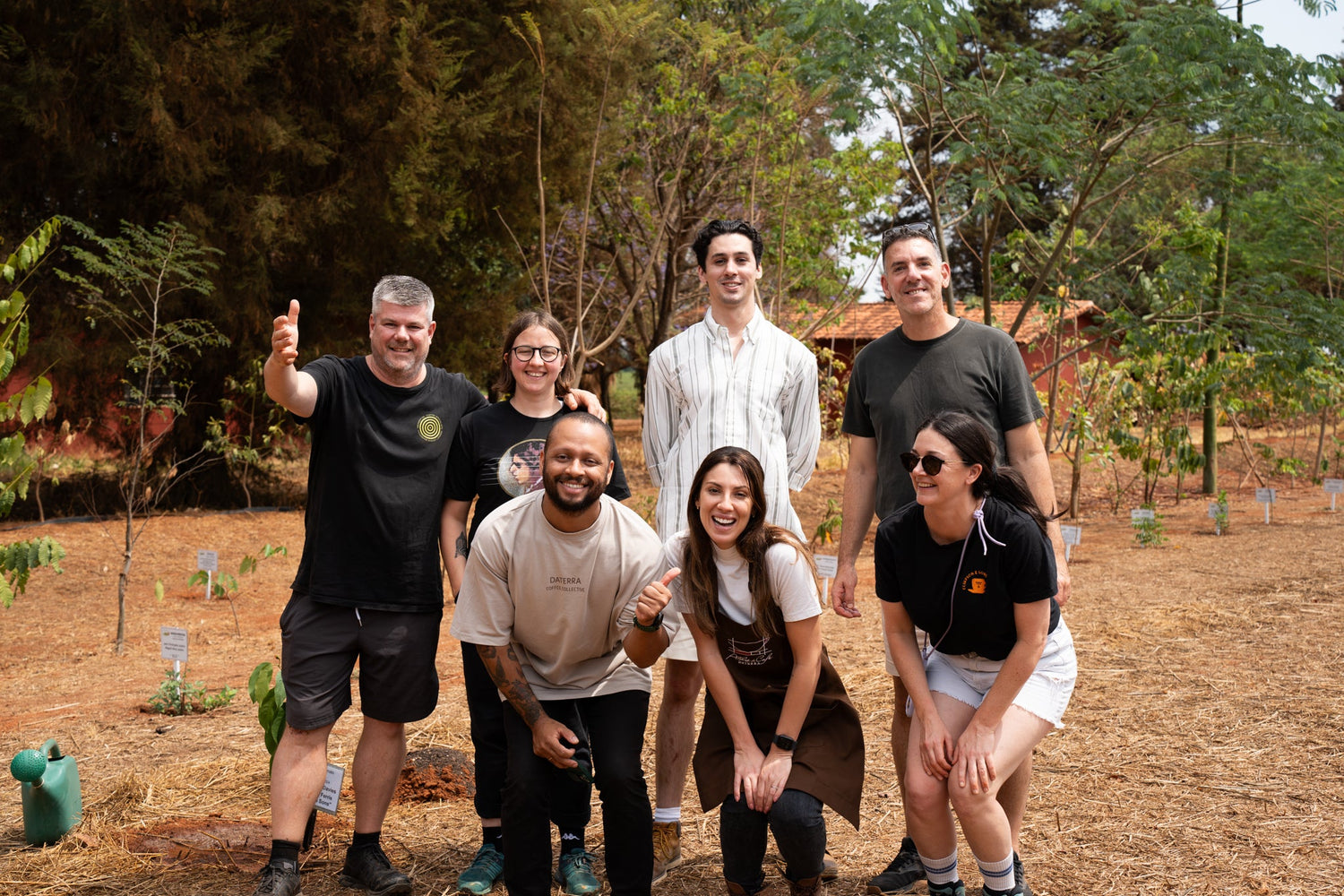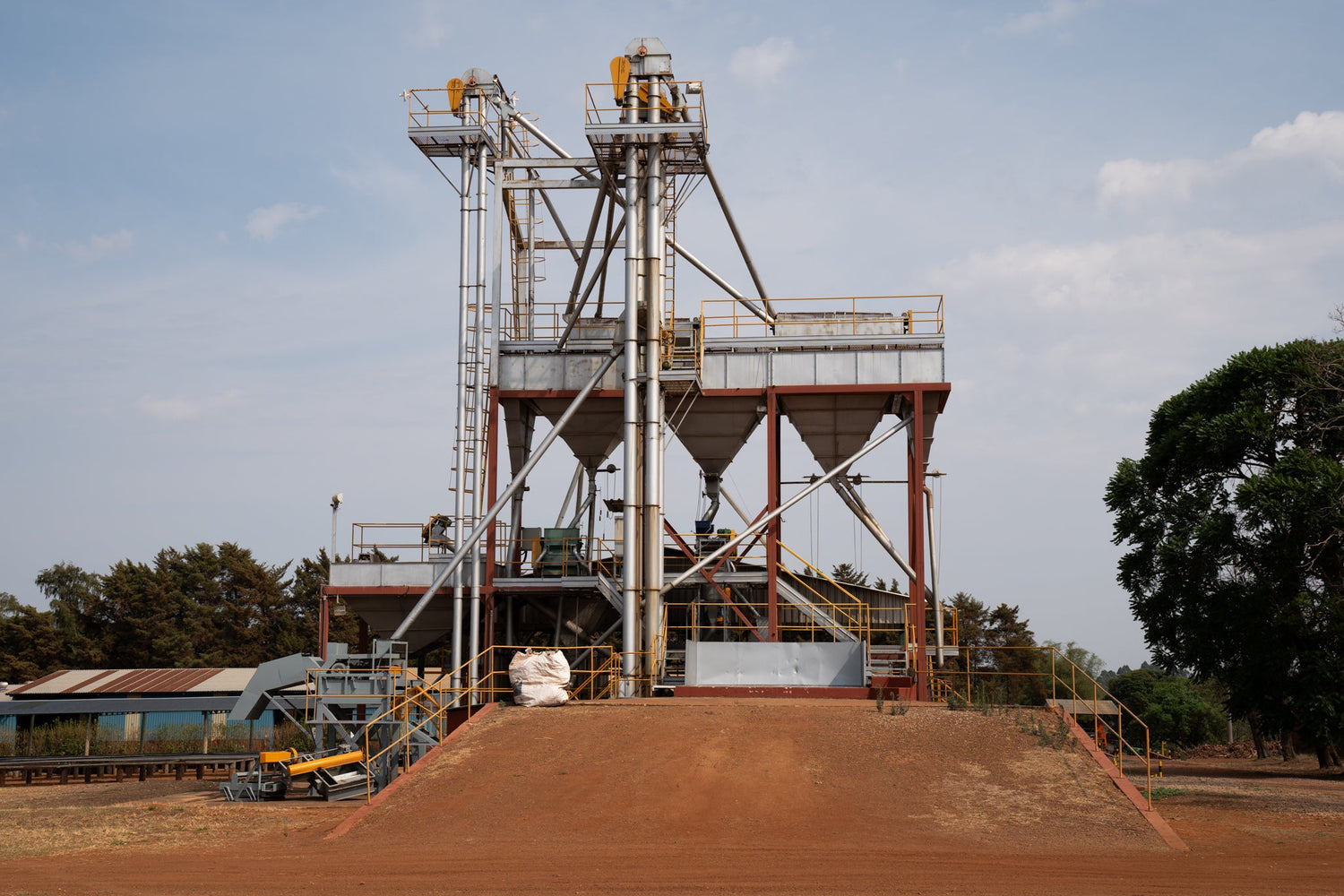Considering the pillars of sustainability Part 1. In this blog, I will aim to share with you some of the values and practices which make Finca San Jeronimo one of the best in show for sustainability.
Framing the Picture
At the beginning of 2019 I was invited to speak at the Producer Roaster Forum in Guatemala and seized my opportunity to visit our long time coffee producing partner - the Bressani family of Finca San Jeronimo. At Climpson & Sons we buy their coffee through Coffee Bird, who are their importer in the UK.
Looking back on when we first bought one of their coffees in 2016, I thought it was a lovely Guatemalan coffee from a family farm with some great aspects of social, and environmental practices. A very positive story relayed to me by Coffee Bird - a trusted partner, who understood our buying principles.
I didn't scrutinise the story closer than this and despite hearing about some of the very tall challenges faced by Guatemalan coffee farms in particular, it wasn’t until I visited that I could understand and connect with them.
Visiting has been a real game changer. It has changed how I think about coffee production, and the people behind it. It has made me challenge what I know, and has made me want to ask questions on the whole value chain. It cast a light on the industry, coffee quality and production, the supply chain and just how ‘sustainable’ they are.

The current predictions for coffee is that it will be basically untenable by 2050 - climate change being the main culprit, but adding to that the current coffee crisis where cost of production of commodity coffee is higher than the money being made from it, as well as the wrath of covid. It is a big picture problem with a dire outlook, and after speaking to many producers in Guatemala at the Producer Roaster Forum, the future seems particularly bleak. It also raises the question of what consumers know about what time, effort, money really goes into their flat white every day.
With that backdrop, this blog post aims to introduce you to a coffee farm that is doing everything they can to create an economically viable, environmentally focussed and socially minded future for your cup of coffee. Our tour guide for this trip is Giorgio Bressani, the eldest son of the family.

Setting the Scene of a Volcano
Finca San Jeronimo is based on Volcan de Atitlan ranging from 700-2600 metres above sea level (masl), with a river running through the forest. It is one of the most idyllic, lush and beautiful places I have ever been - and it is a working coffee and dairy farm that essentially occupies ¼ of the land of the famous volcano. They grow coffee from 800m - 1600m masl, and the further up the volcano you go, the tropical rainforest takes over.
The Breakfast Table
One Bressani family value was obvious to me from the get go: The breakfast table hosted Giorgio’s whole family, and also the managers from each department on the farm. All around the table together, breaking bread or in this case, corn tortilla, and drinking coffee and fresh juice made from tropical fruits. This wasn’t a one-off for my benefit - it happens every day.
Hydro Electricity
Our tour found us winding through the village replete with the cupping lab, the roastery and at one time a bank. We passed the cattle shed and adjacent dairy (more on this later) and wound our way over a river - not just any old river, but where they power their whole estate with hydro power - so much so they are completely off the grid and self-reliant.

Workers’ Families
The farm village also has homes for its workers. They are the kind of homes that, if you visit a tea farm in India, is only used for one person and that’s the farm manager. They have what they need and are arranged around a central play area for kids, school and a modest church. The human needs for security, clean water, sanitation and recreation are all catered for in staff living arrangements.
Moving from industrial fertilizers to homemade compost
For much of the 20th century it has been thought that plants need three things apart from water and light to survive: the elements nitrogen, phosphorus and potassium which symbols are N, P and K respectively in that periodic table we all loved at school. Therefore, most farmers spend a great deal on these NPK fertilizers to feed their crops, and in this case, the coffee plants.
Realising how much fertilizer cost, Girogio has moved to home-made compost in the past five years to replace much of the fertilizer. As well as cost being a driving factor here, Giorgio also learned that plants need fifty or so elements to be healthy plants, and not just the three NPK elements that farmers often feed their crops.
Setting up a farm composting scheme has required a lot of time, problem solving to find the best things to compost, and in a sustainable way that meets the desired output they need. Their compost takes up a lot of space now as they use up to 15 tonnes of compost per day. This is what is needed to feed the whole farm. Their method is to mix cow manure with cardboard, cotton scraps from their coffee sacks and garden scraps too. The piles are about ten feet tall and the heat and humidity means the composting can be start to finish in as little as three months.

Dairy
It’s important to stop and think how essential cows are to the farm’s composting scheme and healthy soil. In a lot of 21st century media we are told that the worst things we can do for the planet are fly and eat cows, whilst here the farmers are saying the best thing we can do for soil health and an ecosystem is have ruminants feeding organic matter back into the soil.
To paint you a picture of the farm’s dairy operation, they have a herd of 50 New Zealand Jersey cows which are small, and light-footed so don’t break up the soil too much. The farm also collects milk from over 500 families in the region and they make the mozzarella for Dominoes pizza, alongside a variety of thirty of so cheeses and some pretty good ice cream. It is not an insignificant operation.
All of these 500 farms could be considered mining industries, where nutrients from one area are taken to another for human consumption. The San Jeronimo way is to ‘close the loop’ on how nutrients flow in their farm and restore farming to a place where as much health is put into the soil as is taken from it.
You can try this coffee now - click here. Watch this space for part two.



